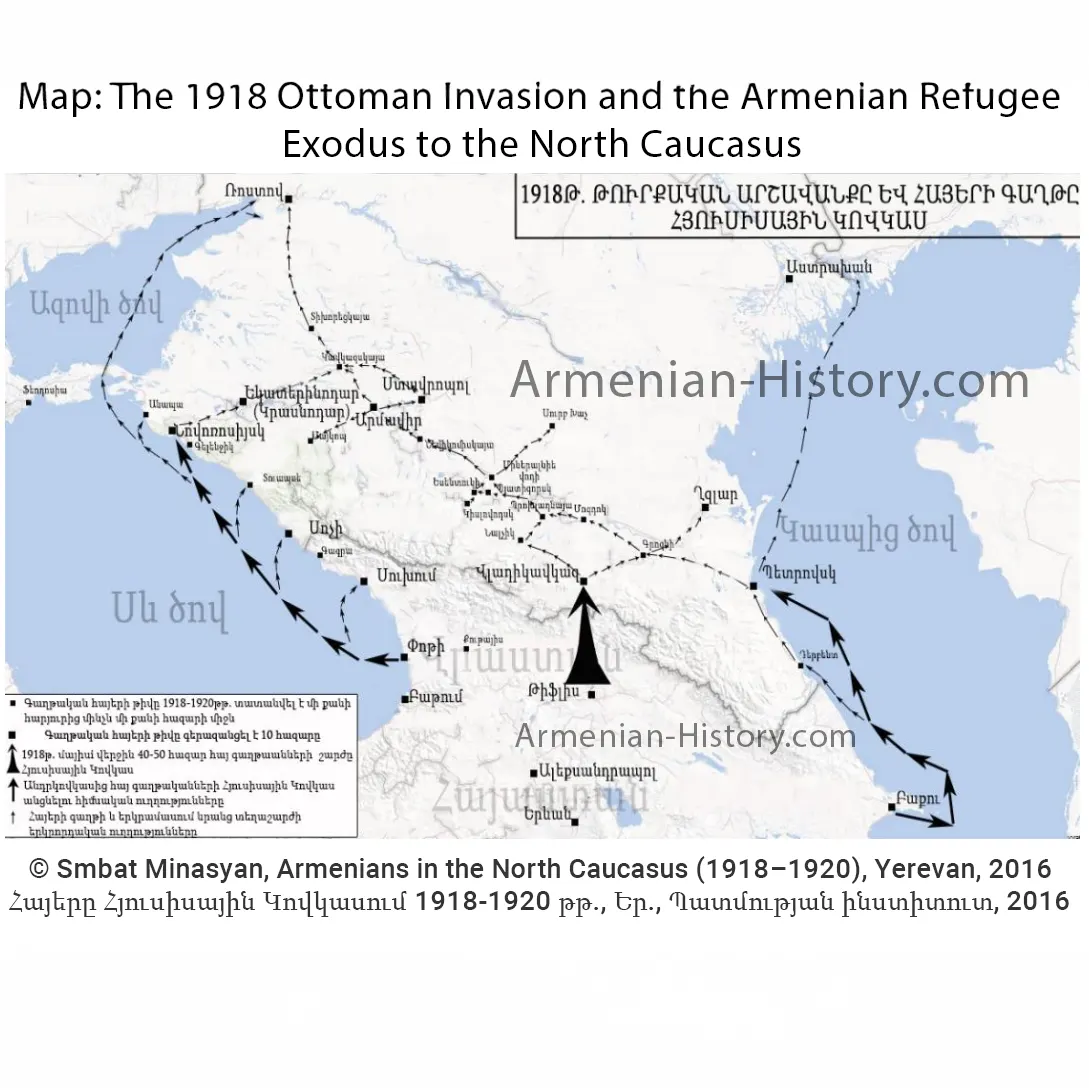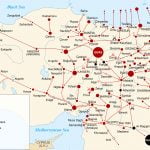Armenian Refugees in the North Caucasus (1918)
In early 1918, Ottoman forces launched a full-scale offensive across the Caucasus front. By late May, they had reoccupied Western Armenia and advanced deep into Eastern Armenia, prompting a massive wave of Armenian displacement.
Between 600,000 and 650,000 Armenians were forced to flee. Around 400,000 sought refuge in the Sevan Basin—one of the last remaining unconquered Armenian areas—while another 200,000 to 250,000 fled to Georgia.

As Ottoman troops invaded the Tiflis province in May 1918, a new exodus began. Armenians from Western Armenia, Eastern Armenia, and Georgia escaped toward the North Caucasus, either via the Georgian Military Road or by sea from Poti.
By the end of 1918, over 124,000 Armenian refugees had arrived in the North Caucasus:
- ~52,000 from Eastern Armenia
- ~30,000 from Western Armenia
- ~40,000 from the Baku region
- ~2,000 from Abkhazia
Alongside them lived nearly 100,000 Armenians who had long called the North Caucasus home—making the region a vital refuge and cultural hub during one of the darkest periods in Armenian history.
Map based on original research by Dr. Smbat Minasyan.
— from the book “Armenians in the North Caucasus (1918–1920)” by Dr. Smbat Minasyan




